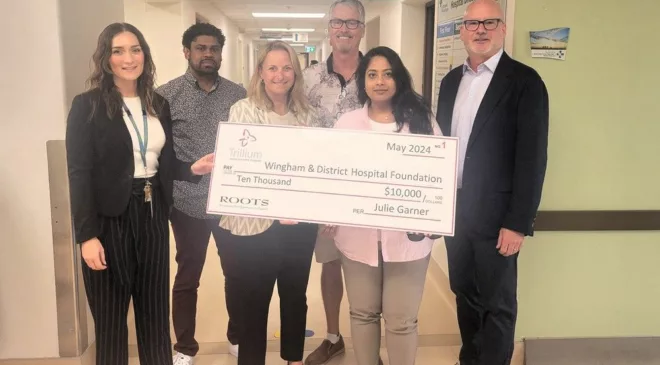In Michigan, patients have been distressed by Novo’s discontinuation of insulin Levemir and shortages of Sanofi’s insulin, Lantus.
When Quinn Nichols, a co-author of this commentary, tried to get a refill of Lantus, the pharmacist said no pharmacies in the area had been able to get their hands on it. If pharmacies can’t stock the insulin we use, patients’ options are to drive to Canada or go to the ER and be hospitalized to get access. This is scary, and we can, and must, do better.
To create a meaningful, sustainable alternative to the Big Three, it is more important than ever for Michigan to center “public pharma” at the forefront of its public health policy. Public pharma—placing the manufacturing, distribution, and pricing of prescription drugs like insulin into public, rather than corporate, hands — offers a long-term solution to high-cost pharmaceuticals.
Governor Whitmer sought to allocate $150 million to investigate public insulin production in Michigan, but the funding was struck from the 2024 budget. In response, Rep. Curtis VanderWall introduced a public pharma bill, which the Health Policy committee moved forward with strong bipartisan support last week for consideration by the full House.
Michigan policymakers should renew their focus on public production of insulin, and need look no further than to California’s CalRx — the nation’s leading public insulin effort to-date — for lessons about its victories and missed opportunities. Public health experts have praised CalRx as “a novel and historic attempt to lower prescription drug costs by turning the state into a vehicle for drug supply” and say that it could “do a world of good” by providing below-market prices for insulin.
Like the structure proposed by VanderWall’s bill, California implemented CalRx as a public-private partnership between its state health department and a nonprofit pharmaceutical manufacturer, CivicaRx.
While California will maintain ownership of the CalRx brand, features of its contract with Civica and the partnership’s operation thus far suggest that California may not be committed to building truly public manufacturing capacity long-term. California paid Civica to handle the entirety of the development and distribution process for the insulin product, rather than investing in creating state-owned facilities and public personnel, which could compromise the transparency and accountability offered by involving the public sector in the pharmaceutical supply chain. CalRx also did not expressly contemplate a patient seat on its board, which should be built into any future efforts to ensure that those most impacted by the problem are informing the solution from the start.
Michigan has the opportunity to build on its momentum tackling medical costs and its history with public pharmaceutical production to be one of the first states to harness the potential of public insulin production, learning from California’s example.
The bill introduced by Representative VanderWall—himself a Republican—for a public-private partnership could garner bipartisan support because of its potential for long-term economic benefits accomplished through collaboration with the private sector. But this could be a first step toward even more innovative solutions to our broken drug supply chain.
Michigan could go even further than the California model and establish wholly state-owned facilities and operations, as they did when operating Michigan Biologics Laboratories under the Public Health Department for most of the 19th century, producing a variety of vaccines for Michigan residents and selling at-cost across state lines, or they could also collaborate across state lines with Illinois, where public manufacturing legislation has also been introduced.
All of these options supply an immediate lower-cost alternative to Big Three insulin, with the capacity to expand production to other pharmaceuticals and public health emergency response measures in the future.




